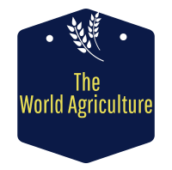Plant Hybridization is the process of interbreeding between two individual plants of different species or genetically divergent individuals from the same species. After Hybridization, Offspring produced by this process may be fertile, partially fertile, or sterile.
In Hybridization, Humans interfere with the natural breeding processes of plants in order to create new plants with certain characteristics that are called hybrids.
Hybridization refers to a process of artificial interfering with the natural plant breeding process. It is generally the deliberate and purposeful breeding of two different varieties within the same species of plant and is something called selective breeding. The male pollen is artificially transferred and put to the female pistil and seed is formed. Selective breeding or plant hybridization is normally undertaken in order to combine the positive characteristics of two different plant varieties. It is therefore expected that the merits of hybrid varieties of plants will outweigh the merits of either plant “parent.”
In hybridization, our purpose is to bring beneficial characteristics of both parent plants. There are many advantages of hybridization. However, selective breeding has some advantages and disadvantages both of which should be addressed.
Maizewas the first species that was widely used to produce hybrids.
Advantages of Selective Breeding
Hybrid plants are normally more vigorous and grow faster in a shorter period than other plants. This can be great news for farmers as they can reap greater crops and make more money.
These plants are more resistant to many plant diseases, which affect parent plants. It is quite protected from Fungi, bacteria, and viruses which otherwise wipe out whole crops. Disease in agricultural crops is so serious that some selective breeding is done for the purpose of creating strains that are more plant disease-resistant.
In a similar way, hybrid plants can be grown easily in problematic growing conditions. Plants can also be bred to be more tolerant of the condition where there is very less availability of water or there are extremes of temperature. Many plant seeds sold for home gardening are selectively bred to make them very easy to grow and survive.
For those agricultural plants that are not being grown for food, selective breeding can be done to create uniformity. This, therefore, is perceived as more attractive. Even selective breeding can be done to produce more visually appealing characteristics, such as bigger or more brightly colored flowers.
Selective breeding is also a much safer way of manipulating plants than through genetic modification, as it is a process of speeding up evolution, rather than overriding it entirely.
F1 Hybrids
Seed obtained from the first cross-pollination of two unrelated open-pollinated plants is called F1 hybrid seed. Each of the parents when combined produces an improved type of plant which has superior quality.
Hybrid Vigor
A common characteristic of F1 hybrids is much-increased vigor. This means it can mature in a shorter period and it has a larger root and good growth and increased productivity per unit area. The gains from what is called heterosis greatly exceed the sum of what the parent plants might be expected to produce.
Disease Resistance
Hybrid plants are resistance or at least tolerance of many diseases that can effect productivity. Plants are vulnerable to a range of diseases that can cause disappointment in a home garden and huge financial losses in agriculture.
Uniform Growth
Although the taste and appearance of open-pollinated plants is highly valued, the size and the growth rate of fruit and leafy parts can vary widely. Hybridization can stabilize growth factors, so the grower can harvest much more uniform plant produce.
Maturity and Yield
In agriculture, the ability to produce a crop early in the season has considerable marketing advantages and fetch more money for the produce.. The first corn, the first tomatoes, the first strawberries, the first grains, and pulses always command higher prices. Hybrids can be created to achieve this, as well as higher yield per unit area, although it is often true that this extra-early produce may sometime not have the full taste of later varieties.
Problems of Hybridization
Later Generations
The seed of open-pollinated or heirloom plants can be saved for next season’s crop and when sown will produce plants that are essentially identical to the parent plant. The seed from F1 hybrid plants, will not produce the exact same copy of the parent plant. Instead, the F2 plant will have random characteristics from either parent or possibly an even earlier trait. It means that F1 hybrid seed has to be created every year by laboriously hand-crossing the parent plants. This is the reason why hybrid seed can be so expensive.
Potential Problems
One of the main problems people have with hybrid breeding is that it can contribute to loss of variety and remove any room for evolutionary expansion in plants further in the future.
Some of the researchers is not happy with this breeding as it does not take into account genetic mutation. It can only increase good traits, rather than removing bad traits. Therefore, in the future, the whole species of plants can end up with the same trait, which can lead to species wipe-out.
The world hybrid seeds market is estimated to be valued at USD 34 Billion in 2016 and projected to reach USD 57 Billion by 2022.
This Growth in the hybrid market is due to the worldwide demand for high quality and high yielding seeds.
There is an increasing demand for hybrid seeds from especially in countries such as China, India, Pakistan, Brazil, and Japan and many other nations fighting with food hunger.
Although there is a lot of research and innovation is happening in the agricultural sector of developed countries which are now already self-sufficient in food production, I, therefore, urge more research and the initiative needed in underdeveloped countries where millions of people dying without proper food. Hybrid plant seeds can be game-changer for these countries.

